Raising Water Consciousness through
World’s Biggest Photo Exhibition and
Largest collection of Photo Stories on Water
Photo Stories | Water and Culture
Water for Recreation and Enjoyment
Nandita Singh and Om Prakash Singh
18 June, 2016
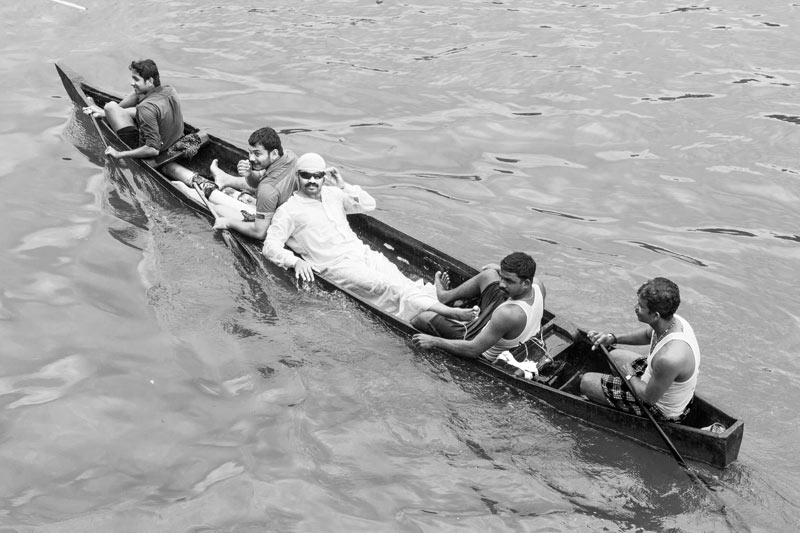
Recreation and enjoyment are important components of human life for which water is an inalienable resource. In India, the simplest form is to play and swim in locally available water bodies which is particularly refreshing on warm days. It may therefore be a common sight to see children and youth in rivers, ponds and even at handpumps and water pipes, playing with water. Water bodies are often a central point of attraction at picnic spots where the young and old, men and women may bathe or swim or simply enjoy the coolness and serenity of the area. Rivers, lakes and water pools at such spots may also have boating facilities to add to the enjoyment. Water fountains are yet another common leisure site in cities that may be located within gardens or on their own, providing a cool relaxing setting in an otherwise busy urban lifestyle. In recent years, musical water fountains are gaining popularity in India where the fountain waters are made to dance to the tune of music, bringing further enjoyment. Water amusement parks are a new addition, where children are often interested. A traditional form of leisure based on water is boat racing which is a popular sport as well as tourist attraction in some areas. Other forms of water-based sporting activities include river rafting, kayaking and angling. Further, water is a resource attracting tourists and in fact a significant part of Indian tourism actually thrives on water. Houseboats in rivers, lakes and backwaters are popular tourist attraction in a number of places. Hotels located within or along the banks of lakes and other water bodies are popular tourist attractions. However, while water is a central resource facilitating recreation and enjoyment, one must not forget that a number of these activities have the potential of leaving a strong negative impact on water. Pollution of water due to house boats and hoteling, or plunging of the water table due to maintenance of the recreation facilities with groundwater are serious examples to consider. Undoubtedly, recreation and enjoyment based on water are important for emotional, psychological and cultural well-being in society but this should not be attempted at the cost of the health and well-being of water ecosystems. Degradation of water ecosystems can otherwise seriously disturb the social and ecological systems dependent on those water resources. This photo story presents a virtual tour of some of the popular activities for recreation and enjoyment in India that are based on water. The title photo depicts youth enjoying a boat ride in Payippad river, district Alappuzha, Kerala.
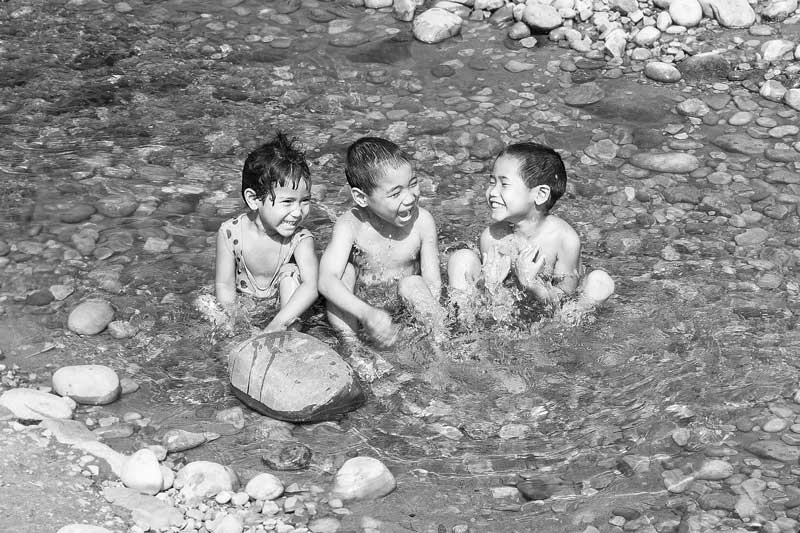
Siang river, East Siang district, Arunachal Pradesh
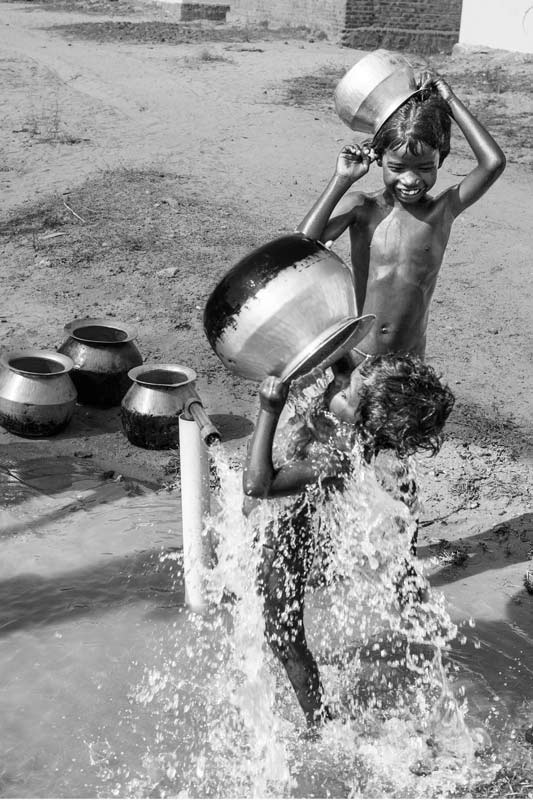
Nellore district, Andhra Pradesh
A public tapstand without a tap provides children the golden opportunity to enjoy a lavish bath and have fun with water on a hot afternoon. In fact, the children are making a fruitful use of the water flowing from the tapstand that would have otherwise gone waste. It should be a concern for the water providers that the hot season is also the most water scarce season, and any wastage should be avoided, as could have been done by installing a tap here and entrusting responsibility to the community for its maintenance.
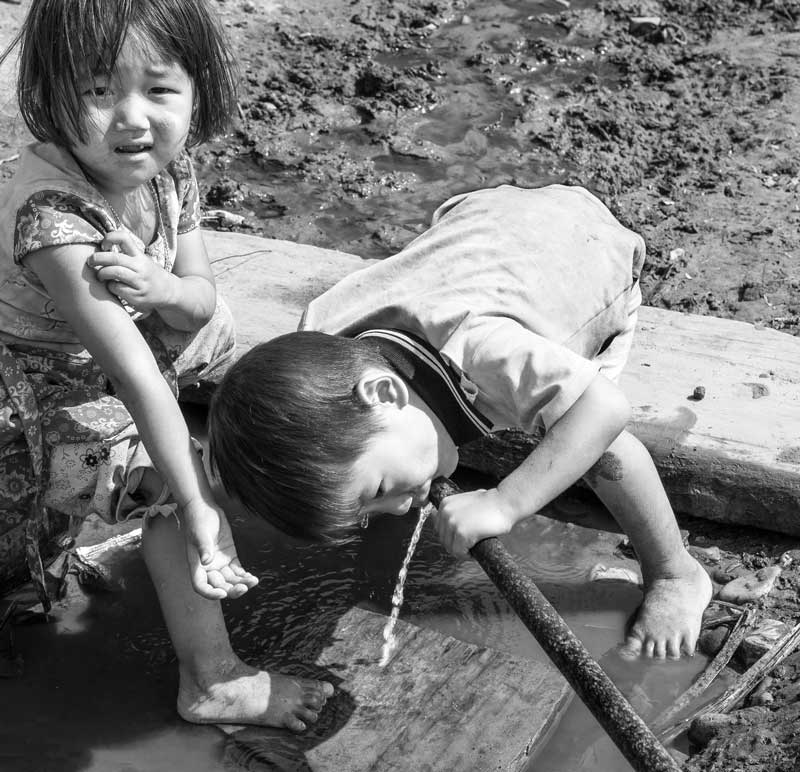
East Siang district, Arunachal Pradesh

Water pool at India Gate, New Delhi district, National Capital Territory of Delhi
The water pools at India Gate and the lawns flanking them are a cool green spot in the midst of an otherwise dense built-up urban area in the heart of New Delhi. This cool recreational spot provides citizens with an opportunity to steal some moments off their busy routines to relax themselves. While a number of swimming pools exist in the city, these are accessible to only those who can afford but the water pools at India Gate enable everyone to cool themselves and enjoy with water. Boating facilities are also available here. Despite its importance for Delhites and visiting tourists, the implications of the India Gate water pools from water resources management perspective are alarming. The source of water in the cemented pools is groundwater which is drawn incessantly for several hours on a daily basis throughout the year except for two months in December and January. In addition, overflow and cleaning of the pools involves draining out of the current water stock into the local stormwater drains and subsequent replenishment with fresh groundwater withdrawals that requires continuous pumping for at least three days. According to statistics from Delhi Jal Board, the official water supply agency, groundwater in Delhi is already overexploited, resulting in decline in water levels by 4-10 meters during the last decade. The present demand for water in the city is around 800 million gallons per day (MGD) whereas the supply from all available sources is only upto 650 MGD. The depletion of groundwater due to overexploitation is a problem common to many other cities in the country, where maintenance of infrastructure for water-based recreation through groundwater withdrawals may have an important role.
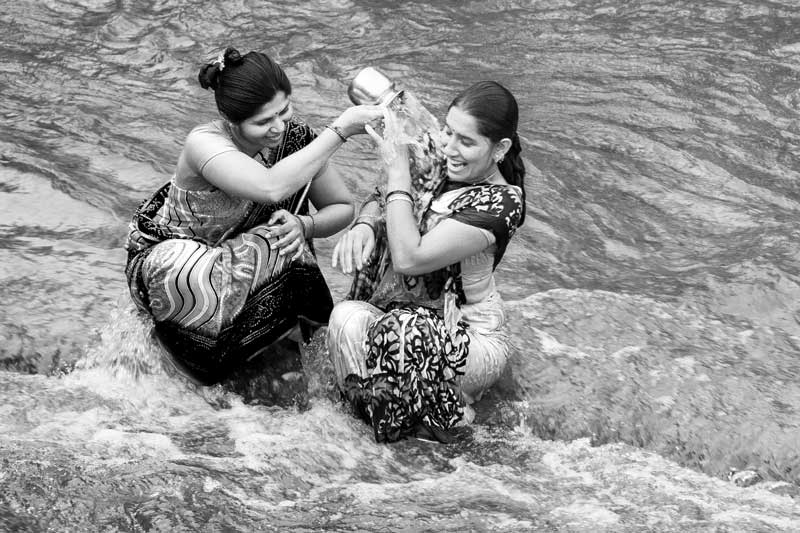
River Godavari, Nashik district, Maharashtra
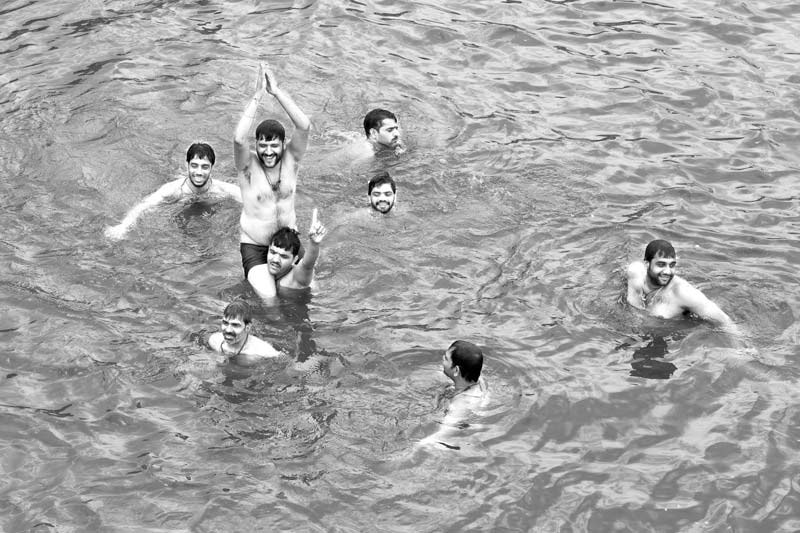
River Godavari, Nashik district, Maharashtra
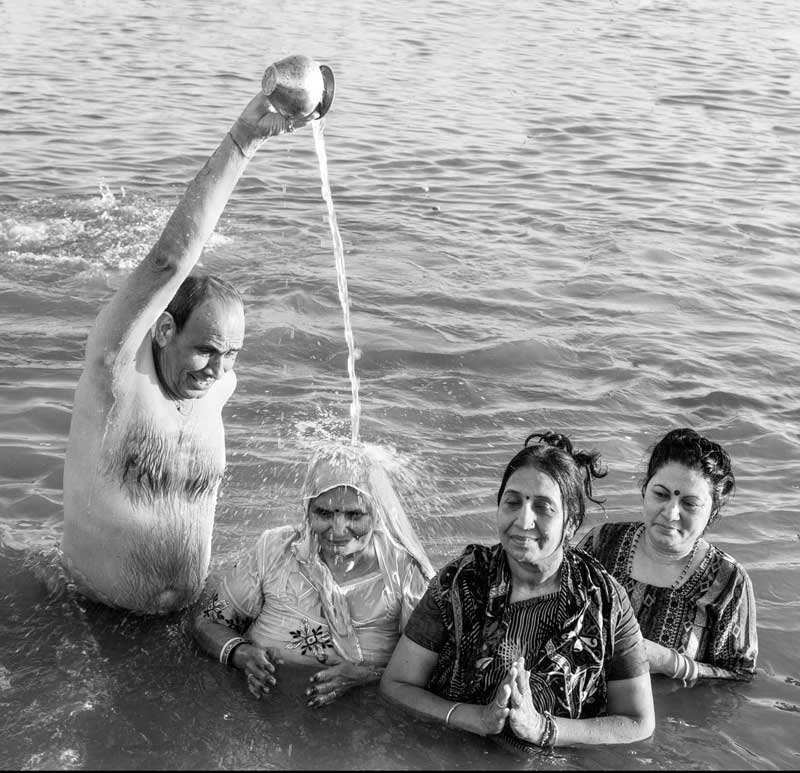
Sangam – the confluence of Ganga, Yamuna and mythical Saraswati – at Prayag (Allahabad), Uttar Pradesh
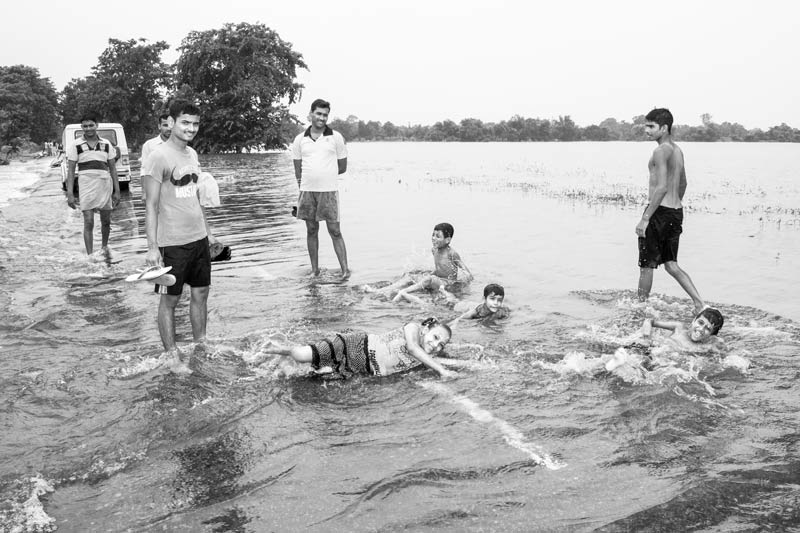
National Highway 84, Bhojpur district, Bihar
While floods are often feared as devastating, sometimes these can provide an opportunity for recreation in a setting where surface water bodies are otherwise limited. However, in this case, the enjoyment can turn risky since the venue is a national highway where speeding vehicles ply.
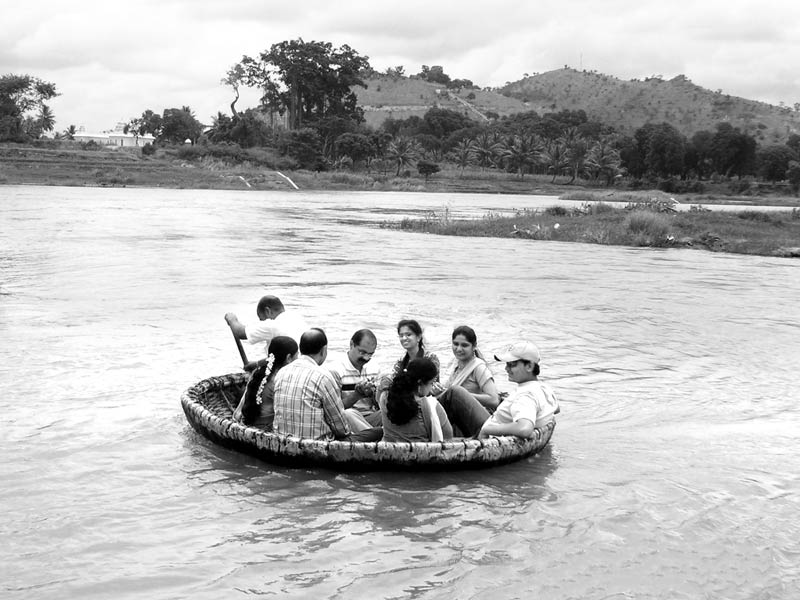
Coracle ride in waters near Chamundi Hills, Mysore district, Karnataka
Coracle ride is a popular water-based recreation activity in South Indian tourism, particularly common in the waters of Kaveri and Tungabhadra rivers. Coracles are round shallow bamboo boats with curved sides which are often made water proof by covering with animal hide or plastic sheet. Apart from being used for recreational ride, coracles have been a traditional means of transport and fishing in the area. In the rocky meandering water channels where the water may be deceptively deep at places, the lightweight coracle is a useful and safe mode of transportation. For entertainment, the coracles can also be made to spin in the waters.
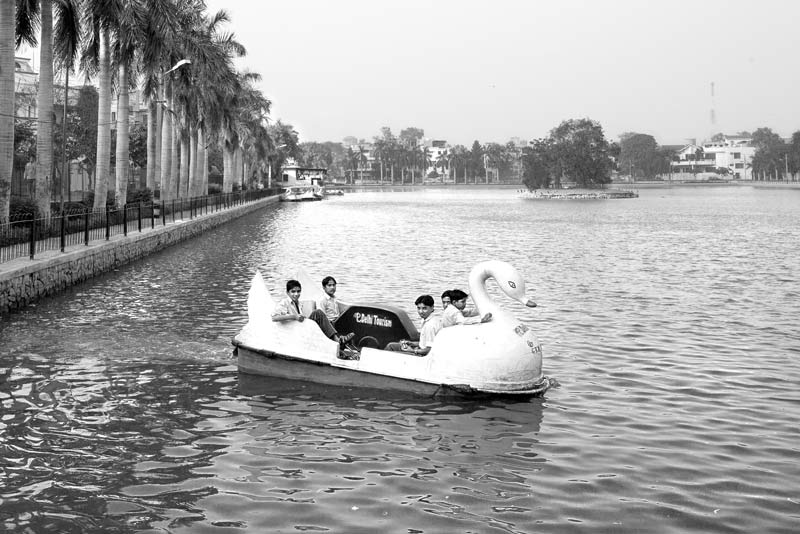
Naini Lake, North Delhi district, National Capital Territory of Delhi
Naini Lake is an important centre of recreation in the northern part of the city of Delhi. Spread over an area of 12 acres and having a depth of about 10 feet, people can enjoy a weekend picnic with family and friends here and also go for boating. Historically a natural lake based on rainwater collected from its local catchment, today the lake presents serious concerns. Urban development in the area since 1960s caused obstruction of the natural drainage channels due to large-scale construction and cementing of the catchment area, leading to reduction of the natural water inflow in the lake. Consequently, boating in the lake, started in the 1990s has been enabled through pumping of groundwater for several hours everyday round the year. This raises two serious concerns – first, pumping out of such huge volumes of groundwater rings alarm bells since this is already a scarce resource in the city, and second, the quality impact resulting from the static water level round the year which has made the lake almost ecologically dead. The concerns thrown up by Naini Lake are not exclusive to this lake, but represent the situation in other lakes in Delhi and elsewhere in India where built up catchments and lack of water quality management are leading to their slow death.
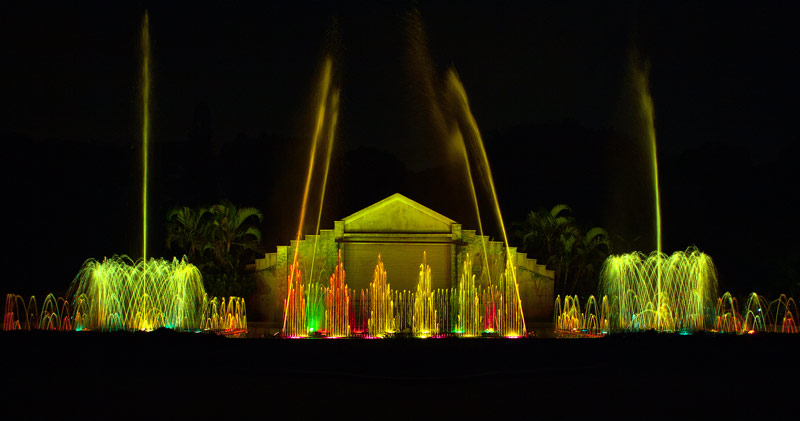
Indira Gandhi Musical Fountain, Bengaluru city, Karnataka
A musical fountain is a type of animated water fountain for entertainment purposes that creates an aesthetic multicolored design with water that changes with music. It is a beautiful example of human creativity through the interaction of music and science where the effects of timed sound waves and timed light (including laser) against water particles create vivid effects. Apart from the Indira Gandhi musical fountain in Bangalore, other well known ones are at Brindavan Garden in Mysore, CESC Fountain of Joy in Kolkata and that in Gujarat Science City in Ahmedabad. Several such fountains exist in other cities such as Mumbai and the National Capital Territory of Delhi. These fountains are a sustainable means of water-based entertainment with minimal impact on water ecology since the water used in the fountain can be reused several times and there are no evident negative quality impacts.
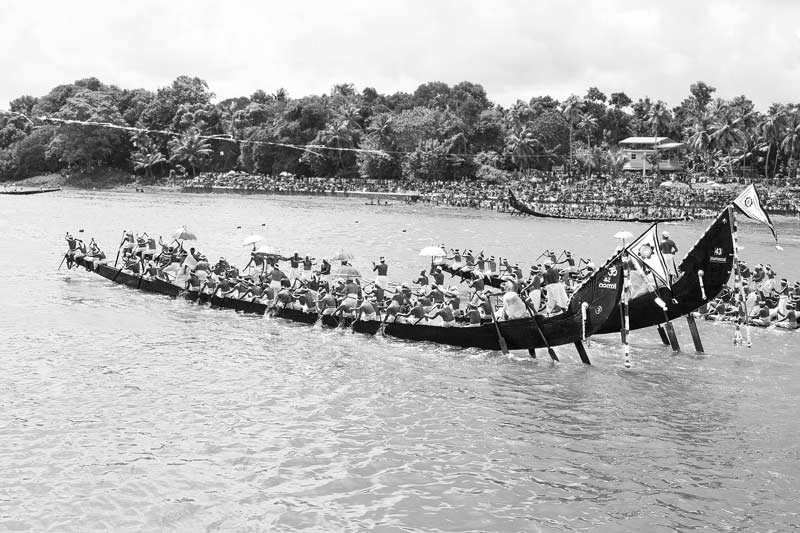
Aranmula Boat Race on Pamba river, Pathanamthitta district, Kerala
Traditional boat race in Kerala is called Vallam Kali which is a form of canoe racing held mainly during the festival of Onam (in August-September) every year. Several different boat races are held in the state during this season. Of these Aranmula Boat Race is the oldest river boat fiesta which has a legendary origin. It takes place in Pamba river at Aranmula village. The participating snake boats, called Palliyodams, belong to different villages situated along the river, and these are rowed by oarsmen dressed in the traditional attire singing customary boat songs. Thousands of people including several tourists gather on the banks of Pamba and other rivers and lakes to watch these exciting races.
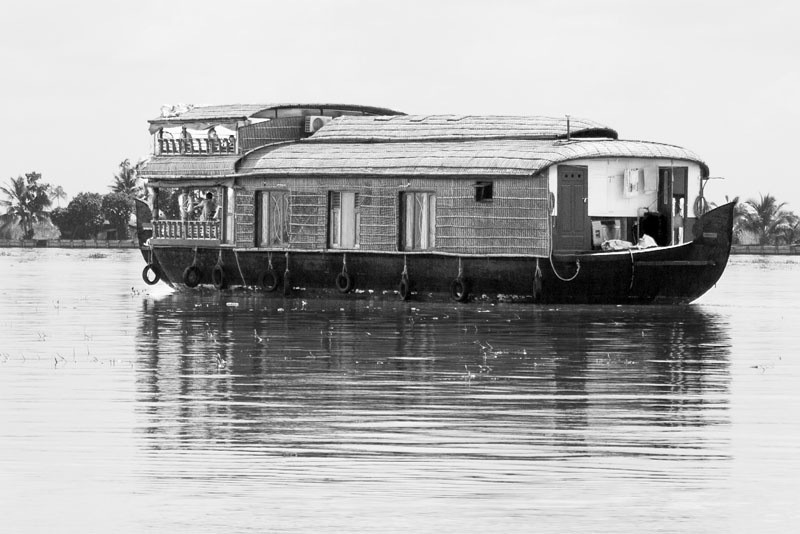
A Houseboat in Vembanad Lake, Alappuzha district, Kerala
Houseboats are designed to be used primarily as a home for leisure and used widely for tourism. In India, houseboats are popular in the backwaters of Kerala in Vembanad Lake and in Dal Lake near Srinagar in Jammu and Kashmir. These also ply in the Brahmaputra river in Assam and in the Ganges delta in Sunderbans, West Bengal. Dal Lake has over 1000 houseboats while Vembanad Lake in Kerala has more than 800. While it is definitely an unparalleled experience to enjoy a stay on the houseboat, the impact of these houseboats on the environment and water ecosystem raises serious concerns. Studies reveal that houseboats in the Vembanad Lake are "killing" this largest wetland ecosystem of south India. In most cases, oil spills from the boat engines as well as untreated grey water (water used to wash dishes and clothes) and black water (sewage) released from the boat on a day-to-day basis degrades the water quality. Further, large amounts of organic matter present in the discharged sewage also consume the dissolved oxygen from the water thus causing fish kills and other undesirable effects. It renders the water frequently undrinkable, causing diseases and adversely affecting human life around these water bodies in many different ways.
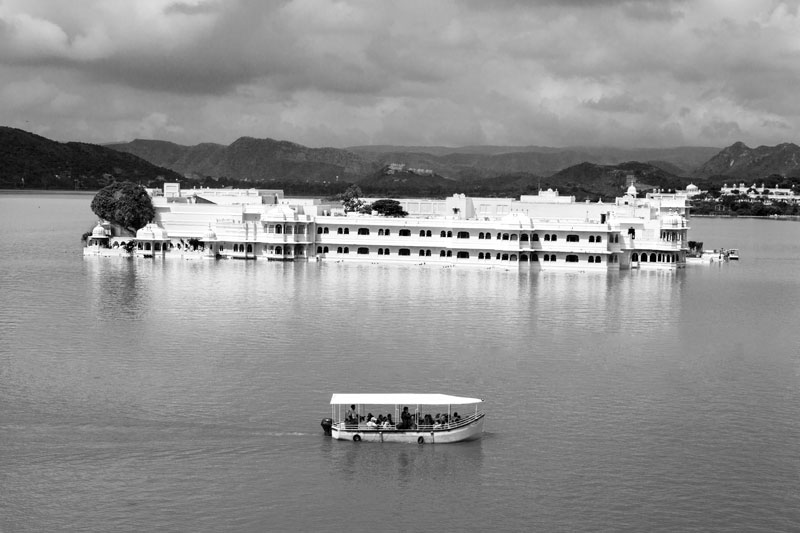
Hotel Taj Lake Palace in Pichhola Lake, Udaipur, Rajasthan
There are several lakes in India which provide breathtaking views making tourists yearn to visit them. This has made hotels located in and around lakes and water bodies popular tourist attractions. Pichola Lake in Rajasthan is one such lake in and around which a number of hotels are located. Hotel Taj Lake Palace is a large luxury hotel with 66 rooms and 17 suites situated in the midst of Lake Pichola which is heavily visited by tourists every year. Notwithstanding the scenic beauty and recreation offered by the hotels in and around water bodies, these tourist hot spots also raise important concern for the local water ecology. The hotels release waste water and sewage while boating to facilitate sightseeing and access to hotels in water further pollute through oil spillage. Studies conducted by the Udaipur Lake Conservation Society in Lake Pichola have found growth of water hyacinth, a thick mat of submerged vegetation in the lake bottom, presence of floating micro algae which are detrimental to the public health, and also varieties of harmful organisms. As a result, out of 42 species of fishes only 17 species have survived. Further, this degree of pollution makes chlorination and treatment by other chemicals ineffective to render the water potable. Monitoring of the water quality by Rajasthan State Pollution Control Board shows that the water is highly polluted and needs immediate remedial measures. This state of affairs and the related concerns are mirrored in several other lakes and water bodies in the country in general where tourism is developing as a booming business.
Considering the serious consequences of many of the water-based activities for recreation and enjoyment on water quality and quantity, it is quintessential to critically reflect upon the current practices and trends. It is important to realize that recreation and enjoyment through water can be sustained on a long-term basis only when the necessary water resources are sustainably used and managed. This in turn requires that these activities be organized in a way that the quality and quantity of this vital resource is not compromised.